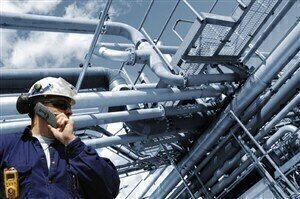Gas detection
Automated methane monitoring solution in Europe to help companies address their climate goals
Jul 23 2021
Honeywell recently launched its gas cloud imaging (GCI) system in Europe to provide automated and continuous monitoring for leaks of dangerous and polluting gases such as methane at oil and gas, chemical and power generation facilities across the continent.
Reducing gas emissions such as methane from hydrocarbon operations is one the most cost-effective and impactful methods to help reach global climate and environmental goals, according to the International Energy Agency. Methane is more than 80 times more potent in trapping heat than carbon dioxide after 20 years, according to the Environmental Defense Fund.
Part of the Honeywell Rebellion gas cloud imaging product portfolio, the Mini GCI system is a compact device designed for congested areas and small sites, which is ideal for many facilities in Europe . The Mini GCI systems can be placed throughout an industrial facility to continuously monitor for gas leaks and provide alerts as soon as they occur.
The system, powered by proprietary hyperspectral gas analytics using artificial intelligence, provides facility operators with an easy-to-interpret, coloured visualisation of the gas plume type, location, direction, size and concentration. This allows for an earlier and more effective response before leaks have the chance to grow into bigger emissions or safety issues.
"To help address global climate change, energy companies are establishing goals to effectively manage methane emissions," said Renaud Mazarguil, president of Honeywell's Gas Analysis and Safety business. "Deploying Honeywell's gas cloud imaging system allows companies to continuously and accurately monitor for significant methane leaks and quickly prioritise repairs. Installing GCI devices can also help address the goals set forth in the European Commission's methane strategy."
Honeywell's gas cloud imaging system has been deployed by more than 25 major energy and chemicals customers globally.
Honeywell is also developing new, advanced methane quantification capabilities for its system, which will enable customers to more effectively measure methane gas emissions.
Current gas leak detection methods require workers to periodically inspect a site with handheld thermal imaging cameras to identify leak sources and arrange for repairs. This approach is time consuming, subject to human errors and can only detect a leak at a specific moment in time when the technician is in the field.
Honeywell's system provides continuous monitoring and offers real-time analytics to see and measure concentrations of the leaked gases. Using hyperspectral sensors, the system can see an "optical fingerprint" of the gas cloud, which makes it possible to differentiate multiple gas types.
Digital Edition
AET 28.4 Oct/Nov 2024
November 2024
Gas Detection - Go from lagging to leading: why investment in gas detection makes sense Air Monitoring - Swirl and vortex meters will aid green hydrogen production - Beyond the Stack: Emi...
View all digital editions
Events
Jan 12 2025 Abu Dhabi, UAE
Jan 14 2025 Abu Dhabi, UAE
Jan 20 2025 San Diego, CA, USA
Carrefour des Gestions Locales de L'eau
Jan 22 2025 Rennes, France
Safety, Health & Wellbeing LIVE
Jan 22 2025 Manchester, UK



















